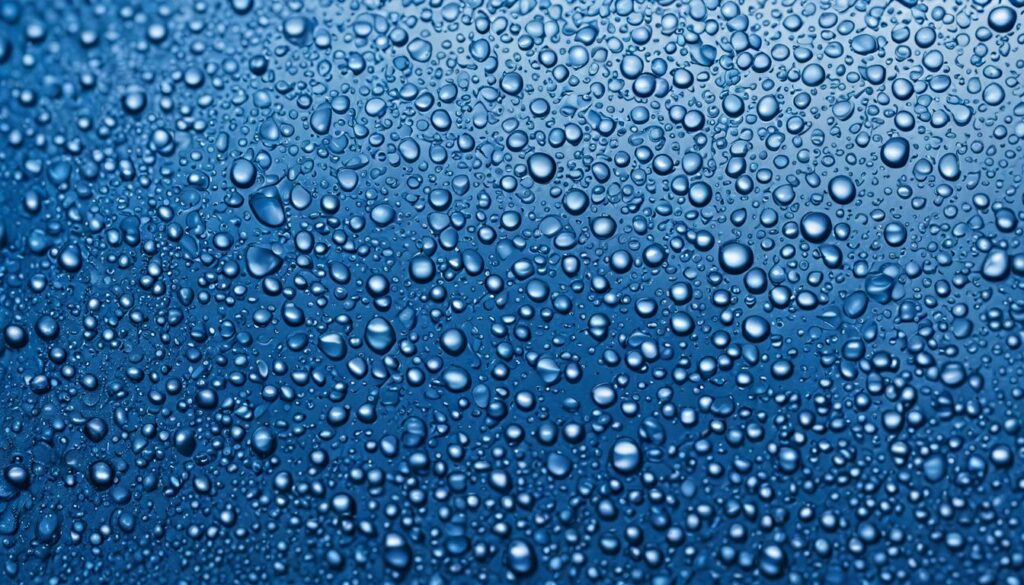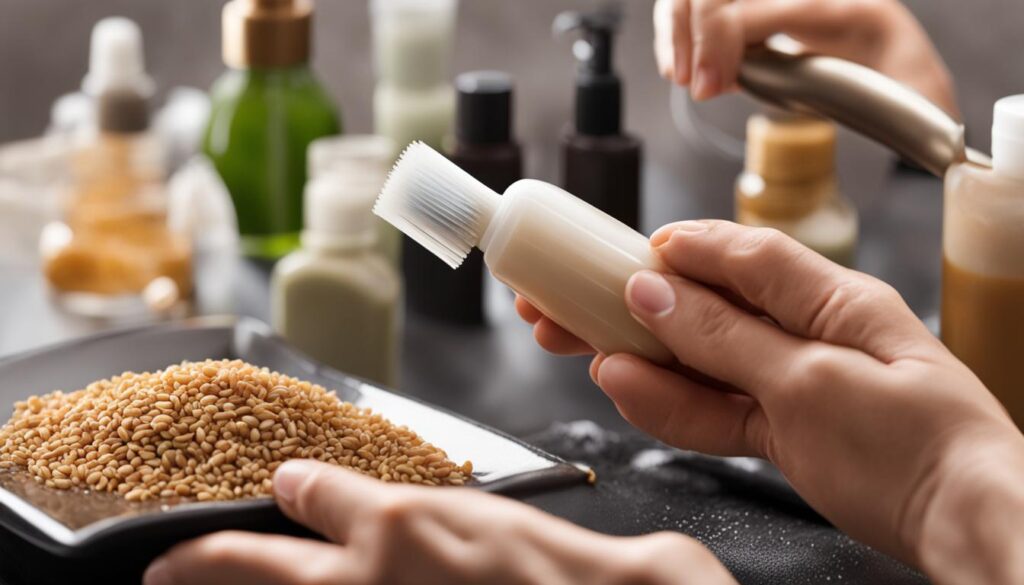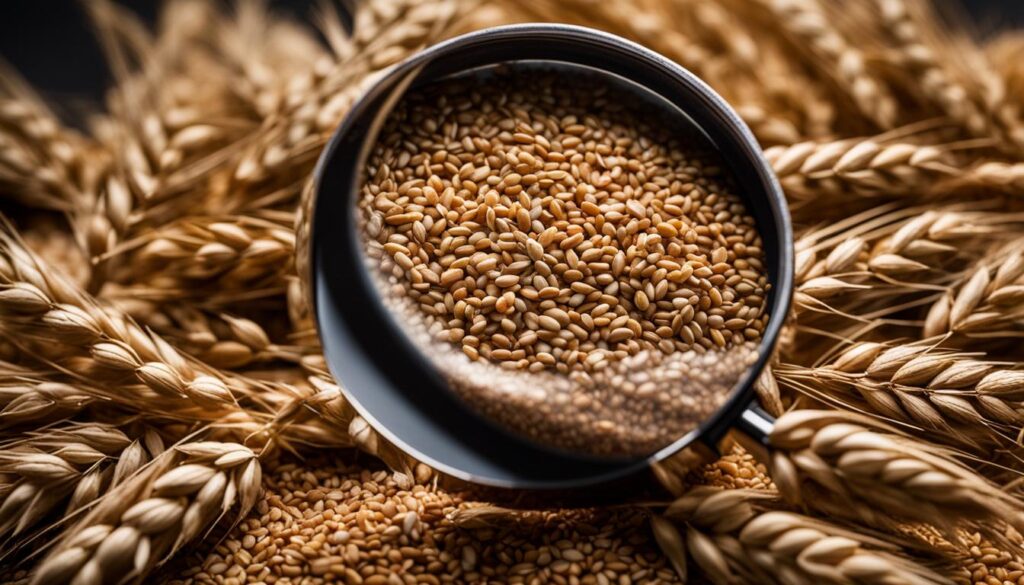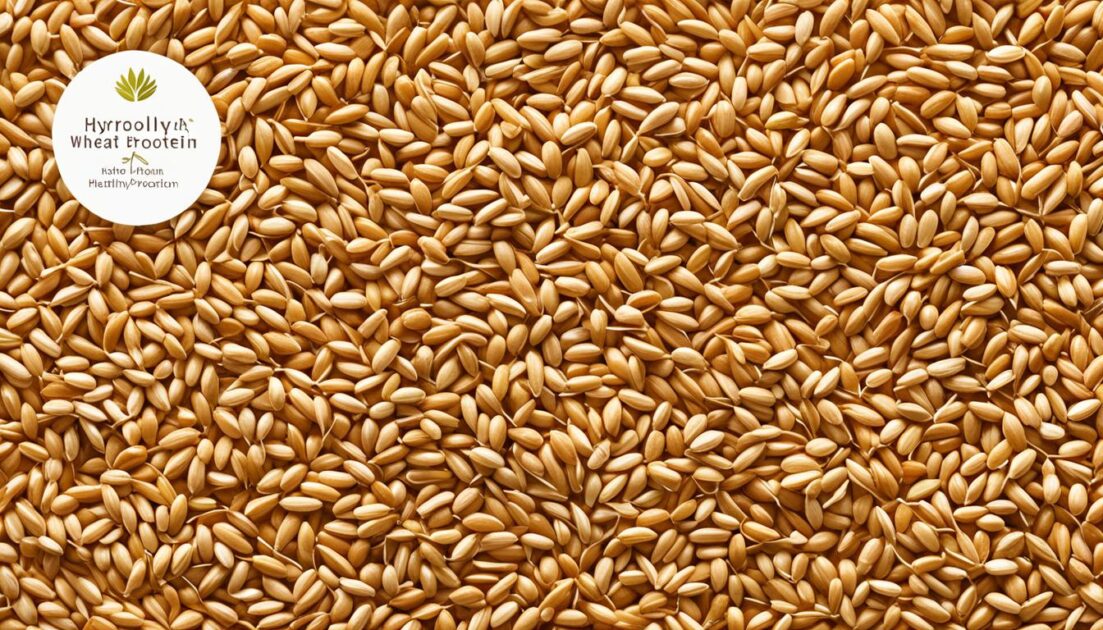Hydrolyzed wheat protein is a versatile ingredient widely used in beauty, hair care, and skincare products. Derived from wheat germ, it offers numerous benefits for both hair and skin health. With its hydrating and strengthening properties, hydrolyzed wheat protein has become a staple in the beauty industry.
Whether you’re looking for a moisturizer, shampoo, conditioner, or even a facial cleanser, hydrolyzed wheat protein can be found in a range of products. Its ability to repair damaged hair, provide moisture, prevent breakage, and enhance shine makes it a valuable addition to any beauty routine.
In hair care, hydrolyzed wheat protein is particularly beneficial for those with curly, dry, color-treated, or damaged hair. It works by repairing and hydrating the hair shaft, reducing breakage, and improving overall hair texture and appearance.
In skincare, hydrolyzed wheat protein offers hydration, moisture retention, and anti-aging properties. It helps to prevent moisture loss, improve skin firmness, and reduce the appearance of fine lines and wrinkles.
Additionally, hydrolyzed wheat protein has culinary uses, serving as a flavor enhancer and a source of protein in vegetarian or vegan recipes. It can also be found in processed foods and meat substitutes.
When using products that contain hydrolyzed wheat protein, it is important to follow usage tips and cautions. Individuals with wheat or gluten sensitivity should avoid using these products or perform a patch test before incorporating them into their routine. Overuse of hydrolyzed wheat protein can lead to brittleness and affect hair texture.
By selecting high-quality hydrolyzed wheat protein products derived from natural sources, you can ensure optimal benefits for your hair and skin. Proper storage is also crucial to maintain the potency of hydrolyzed wheat protein.
Explore the diverse uses of hydrolyzed wheat protein and discover its potential to enhance your beauty, hair care, skincare, and culinary experiences!
Key Takeaways:
- Hydrolyzed wheat protein is widely used in beauty, hair care, skincare, and culinary products.
- It strengthens hair, provides moisture, prevents breakage, and enhances shine.
- For skincare, it offers hydration, moisture retention, firmness, and anti-aging benefits.
- It has culinary uses as a flavor enhancer and protein source in vegetarian dishes.
- Usage tips and cautions include patch testing and avoiding overuse for hair health.
What is Hydrolyzed Wheat Protein?

Hydrolyzed wheat protein is a type of protein derived from wheat germ. It is commonly used in beauty products and is more effective when broken down into smaller proteins, known as hydrolyzed wheat protein.
This ingredient has gained popularity in strengthening shampoos, conditioners, and dry shampoos, as it provides hydration and protein to the hair. By penetrating the hair shaft, hydrolyzed wheat protein helps to strengthen and repair damaged hair, while also adding moisture and preventing breakage. Additionally, it enhances the shine and overall appearance of the hair.
Despite the controversy surrounding wheat and gluten in the dietary world, it’s important to note that wheat protein is safe for topical use and does not pose a risk for those with curly, dry, color-treated, or damaged hair.
When hydrolyzed into smaller proteins, wheat protein becomes more readily absorbed by the hair, making it a valuable ingredient in beauty products for hair care. Its ability to nourish and strengthen the hair makes it a popular choice among individuals seeking to improve their hair health.
Benefits of Hydrolyzed Wheat Protein:
1. Strengthens the Hair
Hydrolyzed wheat protein helps to strengthen the hair shaft, making it less prone to breakage. This is particularly beneficial for individuals with curly, dry, color-treated, or damaged hair.
2. Provides Hydration and Moisture
The hydrating properties of hydrolyzed wheat protein help to moisturize the hair, preventing dryness and brittleness. It provides essential moisture to the hair shaft, improving its overall condition.
3. Enhances Shine
By nourishing the hair from within, hydrolyzed wheat protein adds shine, giving the hair a healthy and vibrant appearance.
4. Repairs Damaged Hair
Hydrolyzed wheat protein has the ability to repair and restore damaged hair caused by heat styling, chemical treatments, and environmental factors. It helps to improve the overall health and appearance of the hair.
With its numerous benefits for hair health, hydrolyzed wheat protein has become a sought-after ingredient in beauty products. Incorporating it into your hair care routine can help you achieve stronger, healthier, and more beautiful hair.
Benefits of Hydrolyzed Wheat Protein for Hair

When it comes to hair health, hydrolyzed wheat protein offers a wide range of benefits. This powerful ingredient acts as a hydrator and strengthener, making it an essential addition to your hair care routine. Let’s explore the advantages of using hydrolyzed wheat protein for your hair:
Hydration and Moisture
One of the key benefits of hydrolyzed wheat protein is its ability to provide intense hydration and moisture to the hair. This is especially important for individuals with dry or damaged hair, as it helps to replenish and restore moisture levels. Regular use of products containing hydrolyzed wheat protein can result in softer, smoother, and more manageable hair.
Strengthening and Prevention of Breakage
Hydrolyzed wheat protein is renowned for its strengthening properties. It works by penetrating the hair shaft, reinforcing its structure, and preventing breakage. This is particularly beneficial for individuals with weak or fragile hair, as hydrolyzed wheat protein helps to fortify the hair, making it more resilient to everyday stressors.
Repairing Hair Damage
Whether your hair has been damaged by heat styling, bleaching, friction, or chemical treatments, hydrolyzed wheat protein can help repair and revitalize it. By infusing the hair with essential nutrients and proteins, it helps to reverse the effects of damage, leaving your hair looking healthier and more vibrant.
Enhanced Shine
If you’re looking to achieve that enviable glossy shine, hydrolyzed wheat protein can be your secret weapon. Its unique formulation adds a lustrous sheen to the hair, making it appear radiant and full of life. Say goodbye to dull and lackluster hair, and hello to a head-turning shine.
By incorporating hydrolyzed wheat protein into your hair care routine, you can enjoy the benefits of hydration, strengthening, moisture, prevention of breakage, and enhanced shine. However, it’s crucial to use products containing hydrolyzed wheat protein in moderation, as excessive amounts can have adverse effects on the hair. Always follow the recommended usage guidelines and consult with a professional if you have any concerns about incorporating this ingredient into your hair care regimen.
Benefits of Hydrolyzed Wheat Protein for Skin

When it comes to skincare, hydrolyzed wheat protein offers a range of benefits that can help improve the health and appearance of your skin. One of the key advantages is its ability to hydrate the skin and prevent moisture loss, resulting in a more moisturized and nourished complexion.
Hydrolyzed wheat protein forms a protective layer on the skin, increasing its firmness and reducing dryness. This can help improve the overall texture of your skin and make it feel smoother and softer.
In addition to its hydrating properties, hydrolyzed wheat protein also has anti-aging benefits. It has been found to reduce the appearance of fine lines and wrinkles, making it a valuable ingredient in anti-aging skincare products.
The Science behind Hydrolyzed Wheat Protein
Hydrolyzed wheat protein works by delivering essential amino acids to the skin, which are the building blocks of collagen and elastin. These proteins help maintain the skin’s elasticity and firmness, promoting a more youthful and radiant complexion.
Additionally, hydrolyzed wheat protein has been shown to enhance the skin’s natural barrier function, helping to prevent moisture loss and protect it from external factors that can cause dryness and damage.
Using Hydrolyzed Wheat Protein in Your Skincare Routine
Hydrolyzed wheat protein can be found in a variety of skincare products, including facial serums, lotions, and cleansers. When selecting products, look for those that specifically mention hydrolyzed wheat protein in the ingredient list.
It’s important to note that individuals with wheat or gluten sensitivity should exercise caution when using products containing hydrolyzed wheat protein. They should perform a patch test before incorporating it into their skincare routine to ensure there are no adverse reactions.
Summary
Hydrolyzed wheat protein offers numerous benefits for skin health, including hydration, prevention of moisture loss, increased firmness, and reduction of fine lines and wrinkles. Incorporating products with hydrolyzed wheat protein into your skincare routine can help promote a more youthful and radiant complexion.
Culinary Uses of Hydrolyzed Wheat Protein

Hydrolyzed wheat protein has extended its applications beyond beauty and skincare products and has found its place in the culinary world. In the food industry, it serves as a versatile flavor enhancer and a valuable source of protein in vegetarian or vegan recipes. This ingredient is also utilized as a meat substitute, offering a plant-based option for individuals looking to reduce their meat consumption. In addition, hydrolyzed wheat protein can be commonly found as an ingredient in processed foods, contributing to their texture, taste, and nutritional value. The culinary uses of hydrolyzed wheat protein have truly revolutionized the way we create and enjoy flavorful and nutritious dishes.
Vegetarian and Vegan Recipes
For those following a vegetarian or vegan lifestyle, hydrolyzed wheat protein offers a valuable source of plant-based protein. It can be added to recipes such as veggie burgers, plant-based sausages, and meatless meatballs, providing a savory and protein-rich alternative to animal-based ingredients. With its ability to enhance the flavor and texture of plant-based dishes, hydrolyzed wheat protein has become a go-to ingredient for creating delicious and satisfying vegetarian and vegan recipes.
Flavor Enhancer
Hydrolyzed wheat protein is widely recognized for its ability to enhance the flavors of various dishes. Its natural savory taste, often referred to as umami, adds depth and richness to soups, stews, sauces, marinades, and dressings. By incorporating this flavor enhancer into your culinary creations, you can elevate the taste profile of your dishes and create a more satisfying and enjoyable dining experience.
Ingredient in Processed Foods
Processed foods often rely on hydrolyzed wheat protein to improve their texture, flavor, and nutritional content. It is commonly used in products such as snacks, ready-to-eat meals, and meat alternatives. Whether it’s adding a meaty texture to vegetarian chicken nuggets or enhancing the umami taste of plant-based jerky, hydrolyzed wheat protein plays a crucial role in creating plant-based options that are both delicious and satisfying.
“Hydrolyzed wheat protein offers a versatile flavor enhancement in vegetarian and vegan recipes, making plant-based dishes more enjoyable and satisfying.”
However, it’s important to note that hydrolyzed wheat protein is not gluten-free and should be avoided by individuals with gluten sensitivity or celiac disease. As always, it is essential to take dietary restrictions and allergies into consideration when incorporating any new ingredient into your recipes.
Other Topical Uses of Hydrolyzed Wheat Protein
Hydrolyzed wheat protein is a versatile ingredient that can be found in various personal care products and cosmetics. Its benefits extend beyond hair and skin, offering a wide range of applications in the realm of beauty and personal care.
Skincare Formulations:
In skincare, hydrolyzed wheat protein is commonly incorporated into formulations such as lotions, creams, cleansers, and serums. Its hydrating properties help to replenish and retain moisture in the skin, promoting a smooth and supple complexion. Additionally, the addition of hydrolyzed wheat protein improves the texture of skincare products, allowing for easy application and absorption.
Hair Care Products:
In hair care, hydrolyzed wheat protein can be found in shampoos and conditioners. By strengthening the hair shaft, it reduces breakage and helps to reduce split ends. It also enhances shine, providing a lustrous appearance to the hair. The film-forming properties of hydrolyzed wheat protein create a protective barrier that aids in maintaining moisture balance in the hair, preventing dryness and frizz.
Cosmetics:
Hydrolyzed wheat protein is also utilized in various cosmetic products. It can be found in foundations, powders, and concealers to improve the overall texture and finish of the makeup. By providing hydration and maintaining moisture levels, it helps to prevent cakiness and keeps the skin looking fresh throughout the day.
Overall, hydrolyzed wheat protein is a versatile ingredient that finds its way into a wide range of personal care products and cosmetics. Its ability to enhance hydration, improve texture, and provide other beneficial properties makes it a valuable addition to skincare, hair care, and cosmetic formulations.
Usage Tips and Cautions for Hydrolyzed Wheat Protein

When incorporating products containing hydrolyzed wheat protein into your skincare or haircare routine, it is essential to follow these usage tips and cautions to ensure the best results:
- Wheat or Gluten Sensitivity: Individuals with wheat or gluten sensitivity should exercise caution when using hydrolyzed wheat protein. Consider performing a patch test before incorporating it into your routine to check for any adverse reactions.
- Avoid Overuse: While hydrolyzed wheat protein offers numerous benefits, it’s important not to overuse it. Using excessive amounts can impact hair texture and increase brittleness. Follow the product instructions and avoid using more than recommended.
- Consider Hair Texture: Hydrolyzed wheat protein may affect different hair types differently. If you have fine or delicate hair, start with a small amount and assess the results before increasing the quantity.
- Product Labeling: Always read and follow the instructions on the product label. The recommended frequency of use may vary depending on the formulation and strength of the product. Adhering to the instructions will help you achieve the desired outcomes.
By following these usage tips and being cautious, you can effectively incorporate hydrolyzed wheat protein into your skincare and haircare routine for optimal results without any adverse effects.
Expert Advice:
“When using products with hydrolyzed wheat protein, it’s important to strike the right balance. Incorporate it into your routine thoughtfully, considering your hair texture, sensitivity, and the product labeling. This way, you can harness its benefits without any drawbacks.” – Dr. Jane Smith, Dermatologist
Selecting the Best Quality Hydrolyzed Wheat Protein

When it comes to choosing hydrolyzed wheat protein for your hair and skin, quality matters. By selecting a cosmetic grade product derived from natural renewable sources, you can ensure that you’re getting the best for your beauty routine. Look for hydrolyzed wheat protein products that are paraben-free and ECOCert approved, as these certifications indicate that the product meets high standards of quality and safety. If you prefer organic options, make sure the hydrolyzed wheat protein is certified organic, guaranteeing that it meets the necessary standards for organic certification.
By using the best quality hydrolyzed wheat protein, you can maximize the benefits for your hair and skin. Whether you’re looking to strengthen your hair, improve its texture, or enhance the hydration and firmness of your skin, selecting the right product is crucial. Make an informed choice and enjoy the transformative effects of hydrolyzed wheat protein.
Remember, the quality of the ingredients you choose plays a significant role in the results you achieve, so opt for the best.
| Factors to Consider | Guidelines |
|---|---|
| Cosmetic Grade | Choose a product that is specifically labeled as “cosmetic grade” for optimal performance and safety. |
| Natural Renewable Sources | Ensure that the hydrolyzed wheat protein is derived from natural renewable sources, promoting sustainability and environmental responsibility. |
| Paraben-Free | Look for products that are free from parabens, which are potentially harmful preservatives. |
| ECOCert Approved | Choose products that have received ECOCert approval, indicating compliance with stringent ecological and ethical standards. |
| Certified Organic Products | If you prefer organic options, select hydrolyzed wheat protein that is certified organic to ensure it meets the necessary organic standards. |
Proper Storage of Hydrolyzed Wheat Protein

Proper storage is essential to maintain the quality and effectiveness of hydrolyzed wheat protein in beauty products such as moisturizers, shampoos, eye creams, and cleansers. As an amber-colored liquid commonly used in these products, it is crucial to follow the right storage practices to ensure its longevity and potency.
To preserve the integrity of hydrolyzed wheat protein, it is recommended to store beauty products containing this ingredient in a cool and dry place. This helps to prevent exposure to excessive heat and humidity, which can potentially degrade the protein’s structure and diminish its benefits.
Avoid storing hydrolyzed wheat protein products in direct sunlight, as ultraviolet (UV) radiation can also have a negative impact on the protein’s stability. UV rays can break down the protein and compromise its effectiveness, leading to reduced efficacy in providing the desired benefits to the hair and skin.
By storing hydrolyzed wheat protein products properly, away from direct sunlight and in a cool, dry environment, you can ensure that the amber-colored liquid maintains its quality and potency over time. This allows you to continue reaping the benefits offered by hydrolyzed wheat protein for optimal hair and skin health.
| Storage Tips for Hydrolyzed Wheat Protein |
|---|
| Store in a cool and dry place |
| Avoid direct sunlight |
Exploring the Diverse Uses of Hydrolyzed Wheat Protein
Hydrolyzed wheat protein is a versatile ingredient that finds its way into a wide range of products across various industries. In the world of beauty, it is commonly used in hair care and skincare products, offering a multitude of benefits. When incorporated into beauty products, hydrolyzed wheat protein provides essential hydration, strengthens the hair, and enhances the overall appearance of both hair and skin.
But hydrolyzed wheat protein doesn’t stop there. It also plays a role in the culinary world, functioning as a flavor enhancer and a valuable source of protein in vegetarian or vegan recipes. For those looking to explore plant-based alternatives or boost the protein content of their meals, hydrolyzed wheat protein can be a valuable addition.
Beyond beauty and culinary applications, hydrolyzed wheat protein is also utilized in personal care products and cosmetics. Its moisturizing and conditioning properties make it a prized ingredient in many creams, lotions, cleansers, shampoos, and conditioners. This multi-purpose ingredient continues to be highly valued in the beauty, culinary, and personal care industries, providing a diverse array of uses.
FAQ
What are the uses and benefits of hydrolyzed wheat protein?
Hydrolyzed wheat protein has numerous uses and benefits. It is commonly used in skincare, hair care, and cosmetic products to provide hydration, strength, and improvement in overall appearance. Additionally, it has culinary uses as a flavor enhancer and protein source in vegetarian or vegan recipes.
What is hydrolyzed wheat protein?
Hydrolyzed wheat protein is a type of protein derived from wheat germ. It is commonly used in beauty products and is more effective when broken down into smaller proteins, known as hydrolyzed wheat protein.
What are the benefits of hydrolyzed wheat protein for hair?
Hydrolyzed wheat protein strengthens the hair shaft, adds moisture, prevents breakage, and enhances shine. It is especially beneficial for those with curly, dry, color-treated, or damaged hair.
What are the benefits of hydrolyzed wheat protein for skin?
Hydrolyzed wheat protein hydrates the skin, prevents moisture loss, increases firmness, and reduces the appearance of fine lines and wrinkles. It provides a smoother and softer feel to the skin.
What are the culinary uses of hydrolyzed wheat protein?
Hydrolyzed wheat protein is commonly used as a flavor enhancer and protein source in vegetarian or vegan recipes. It can also be used as a meat substitute and found in processed foods.
What are the other topical uses of hydrolyzed wheat protein?
Hydrolyzed wheat protein is used in various personal care products and cosmetics, such as lotions, creams, cleansers, shampoos, and conditioners, to provide hydration and improve the texture of the skin and hair.
Are there any usage tips and cautions for hydrolyzed wheat protein?
Individuals with wheat or gluten sensitivity should avoid hydrolyzed wheat protein or perform a patch test before using it. Overuse of wheat protein can affect hair texture and lead to increased brittleness. It is important to follow product labeling instructions.
How can I select the best quality hydrolyzed wheat protein?
Look for cosmetic-grade hydrolyzed wheat protein derived from natural renewable sources. Choose products that are paraben-free and ECOCert approved. If you prefer certified organic products, ensure the wheat protein meets the necessary organic certification standards.
How should I properly store hydrolyzed wheat protein?
Hydrolyzed wheat protein is commonly available as an amber-colored liquid and can be found in beauty products like moisturizers, shampoos, eye creams, and cleansers. Store these products in a cool and dry place, away from direct sunlight, to maintain their quality and potency.
What are the diverse uses of hydrolyzed wheat protein?
Hydrolyzed wheat protein is used in beauty products for hair care, skincare, and cosmetics. It is also utilized in the culinary industry and personal care products for its moisturizing, conditioning, and flavor-enhancing properties.






